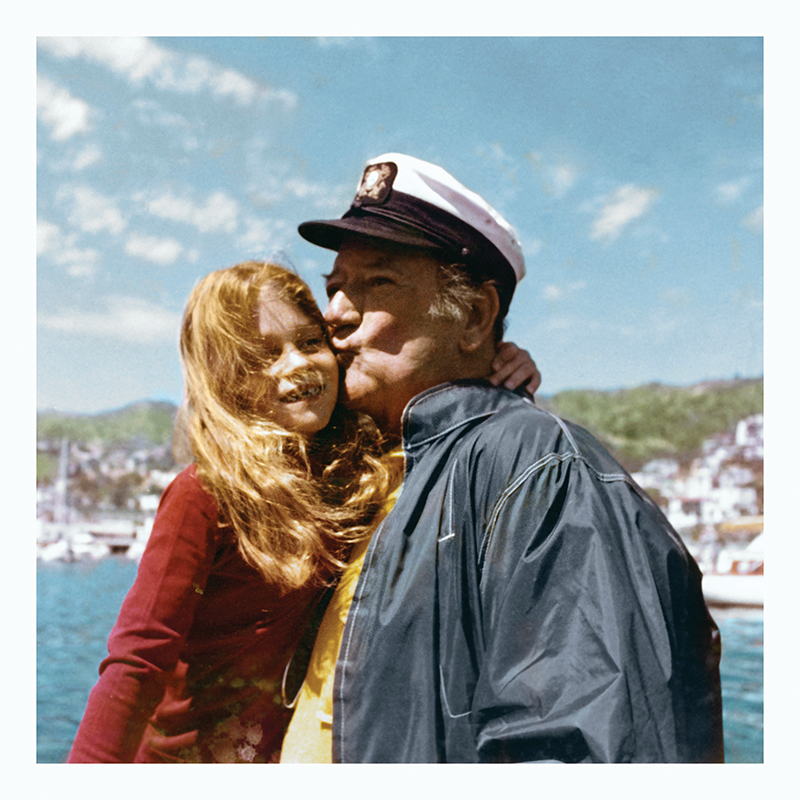Power & Motoryacht: What was life like aboard Wild Goose?
Ethan Wayne: It was really comfortable, and it was really nice, but it wasn’t … fancy. Like if you look at John Wayne, he had a clear style that wasn’t overly embellished. If you look at his outfit on screen, he looked good: the shirt and scarf, a nice velvet vest, cotton pants and really nice boots. He was specific. That was what he wanted to look like, and the boat was similar. It was very seaworthy, and very well kept. But it didn’t have teak and holly decks; I don’t know what they were made of, but they were basically painted decks. The surface that you walked on was painted wood, some kind of non-skid material. It wasn’t teak.
Power & Motoryacht: It sounds like it was a boat that was made to function well and not be particularly showy, even though it was pretty impressive at the time.
Ethan Wayne: Right. At the time, there weren’t a lot of boats that were 136 feet cruising around.
Power & Motoryacht: What are some of your fondest memories aboard?
Ethan Wayne: At sunset we would take the American flag down and we’d fold it and fire off a canon. Every day. So there’s videos of him showing the crew how to fold the flag, along with the 2- or 3-foot canon we’d stuff with gunpowder and wet leaves and paper. He’d fire off the canon, and then, you know, it was time to have a drink.
Another thing we would do in the Pacific Northwest—and this was in the ’60s, mind you—we would go to a glacier. And the icebergs that had fallen off the glacier, we would get on top of them with fire axes from Wild Goose, and we’d hack off chunks and chunks of glacial ice that they’d then put in the freezers in the aft deck; there were probably like 12 feet of freezer on each side of the boat, big stainless steel ones. And we’d store that ice for their cocktails because it didn’t melt very fast and it didn’t water down whatever spirit they were drinking. Along with Wild Goose, a small 16-foot Boston Whaler that they used as a dinghy—and a modest crew—would often accompany the family on local cruises to Santa Catalina Island or remote destinations.
Power & Motoryacht: We’ve read life aboard was no luxury liner. You had to earn your keep?
Ethan Wayne: It wasn’t like a scuba diving trip where someone hands you your equipment and connects your regulator to the tank. We did everything. It was different back then. When I was a kid, we took care of all the equipment. We drove the dinghies. We mopped the deck. We wiped down the rails with the crew. It was just like if you grow up on a ranch, you take care of the animals. There’s just certain things you do. And it’s not a vacation, it’s not like “Oh, we’re going yachting.” We lived on a boat for as long as we could whenever he had time. And the boat did have a crew, but we were very involved with it. If the dinghy ever came loose, you had to go get it. I could tie a bowline before I could tie my shoes. I can remember people not tying up the dinghies and having to swim to go get them. And they weren’t big dinghies, but they weren’t small either: One was [the] Whaler and the other was a 17-foot British dory type boat. But man, I put a thousand hours on those things. Every chance I could get the keys, I would disappear with those.
Power & Motoryacht: What were your responsibilities on board?
Ethan Wayne: It’s funny, it doesn’t seem like we give young people the same latitude that I had when I was growing up. I could go get fuel for the boat and put it in and mix it. I could take my little sister, [Marisa] who was four years younger than me, when I was 10 and take the Whaler out. We’re in places where there’s nobody around, and maybe the only little fishing village is a few miles away. We’d go up rivers that had breaking surf at the mouth, and when I think back to it now, I’m like, “Jesus Christ, I can’t imagine letting my nephew loose!” [laughs]. But when you grow up in it, you kind of accept the responsibility, and you have to be able to think on your own. You have to be responsible for the equipment. I shouldn’t say that, obviously I broke stuff when I was a kid. But you had to have a modicum of neurons working to get back and to keep everybody safe.
I can remember him telling my little sister “Marisa, clean out your room.” Then he goes out and comes back, and it’s still not made up. He goes, “Marisa, I asked you to clean out your room. I’m not going to ask you again. Clean out your room.” “Okay, Dad.” She’s playing with her toys, he’s playing cards. He gets up again and goes to her room and all of a sudden you see her clothes flying over the side—just right out the door into the water. She goes “Hey! Wait a minute, what are you doing!” And he goes “I told you three times to clean out your room and you didn’t do it, so now you’re going to live without this stuff.”
Power & Motoryacht: I think that is the way we hoped John Wayne would run a boat.
Ethan Wayne: That was sort of the way he did things. He wasn’t overtly mean, but there would be a point where [he would expect you to] just get your shit done. He’s the one that has to buy the clothes, so he’s basically throwing his own clothes overboard. But he’s sending a message to the kid that she’ll remember.
Power & Motoryacht: What are some of your most vivid memories aboard Wild Goose?
Ethan Wayne: Just the fear that if I did something that affected my little sister in any adverse way, there would be hell to pay. He’d say, “Run her into the place” and the place is up the river with breaking waves at the entrance. I’m 10 in a 16-foot Boston Whaler with a 115-hp motor on the back. And you have to judge the waves, and ride the back of a wave in, then you’ve got to get out. One day, [we explored a big inlet] and it was pretty scary getting out of there. I remember thinking, “I don’t care about the boat, I don’t care about anything, I just don’t want to get back there and tell my dad we got turned over in the surf.”
And you know what’s funny? He never really got physical. His look or his tone did it all. When I think back on it I’m like, “He must have kicked my ass...” but he didn’t really kick my ass. He just was very good at getting his point across.
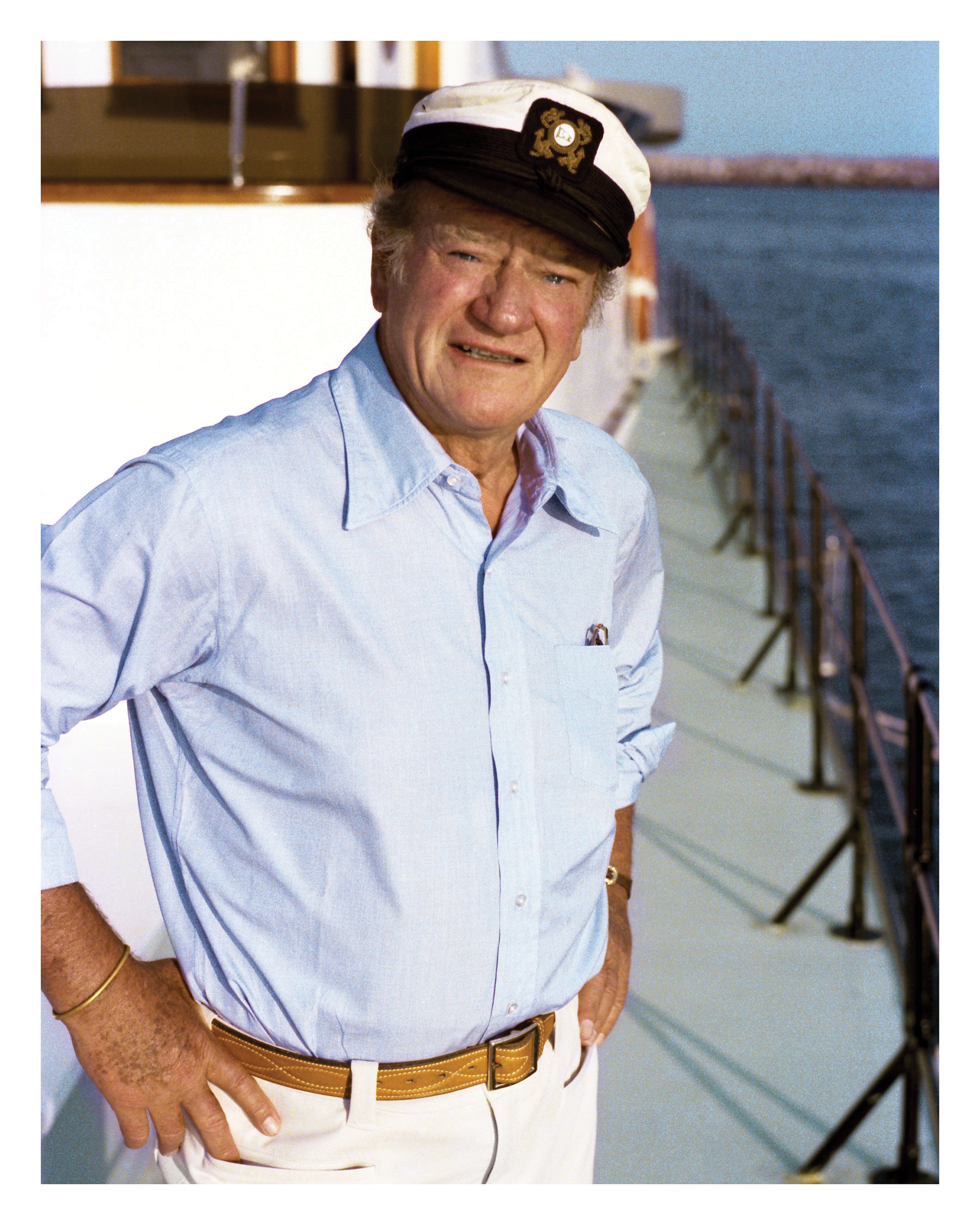

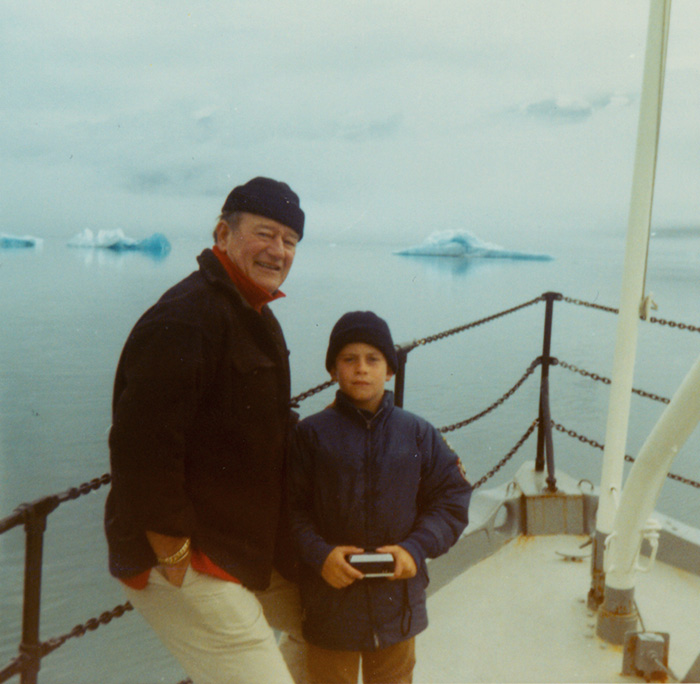
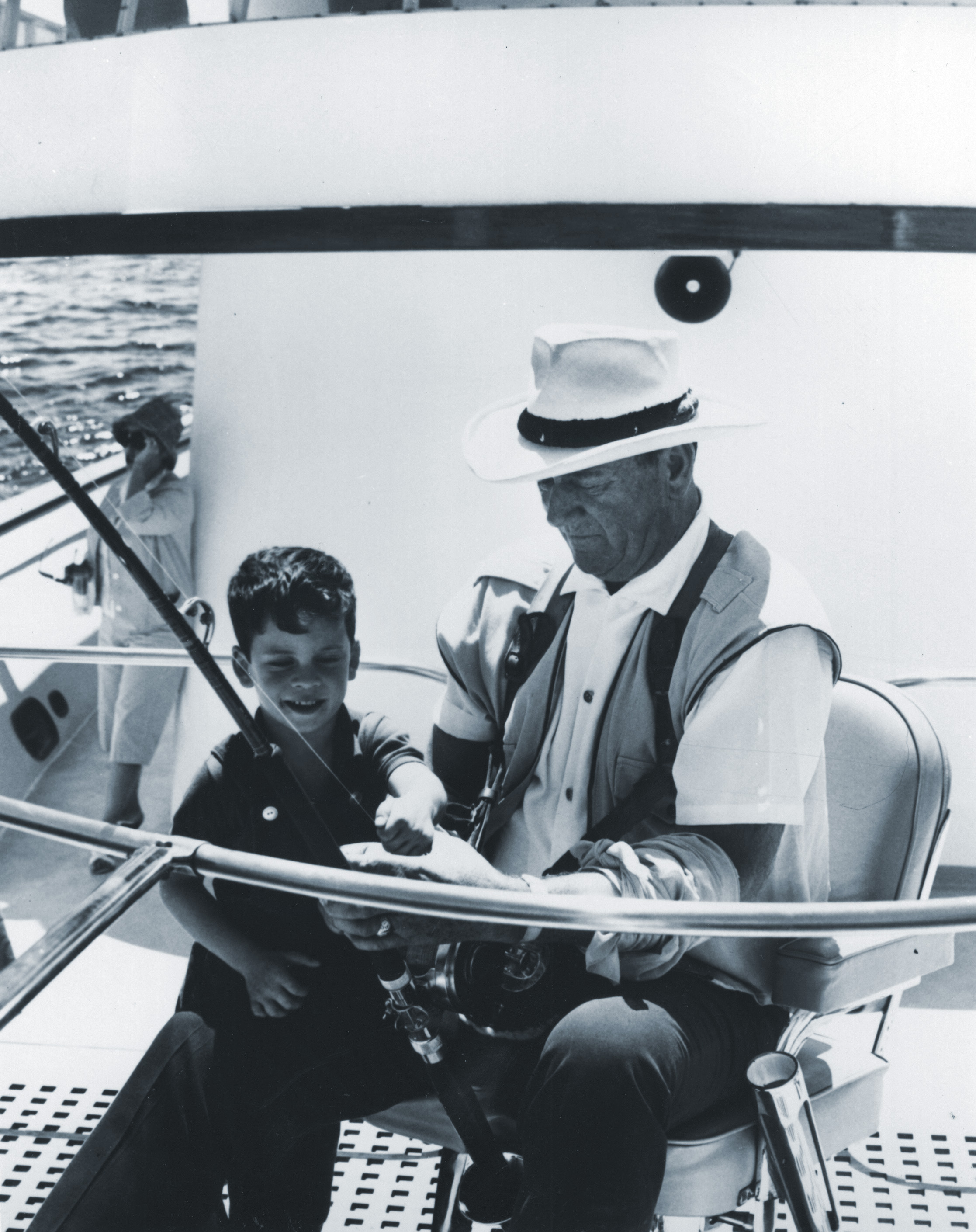
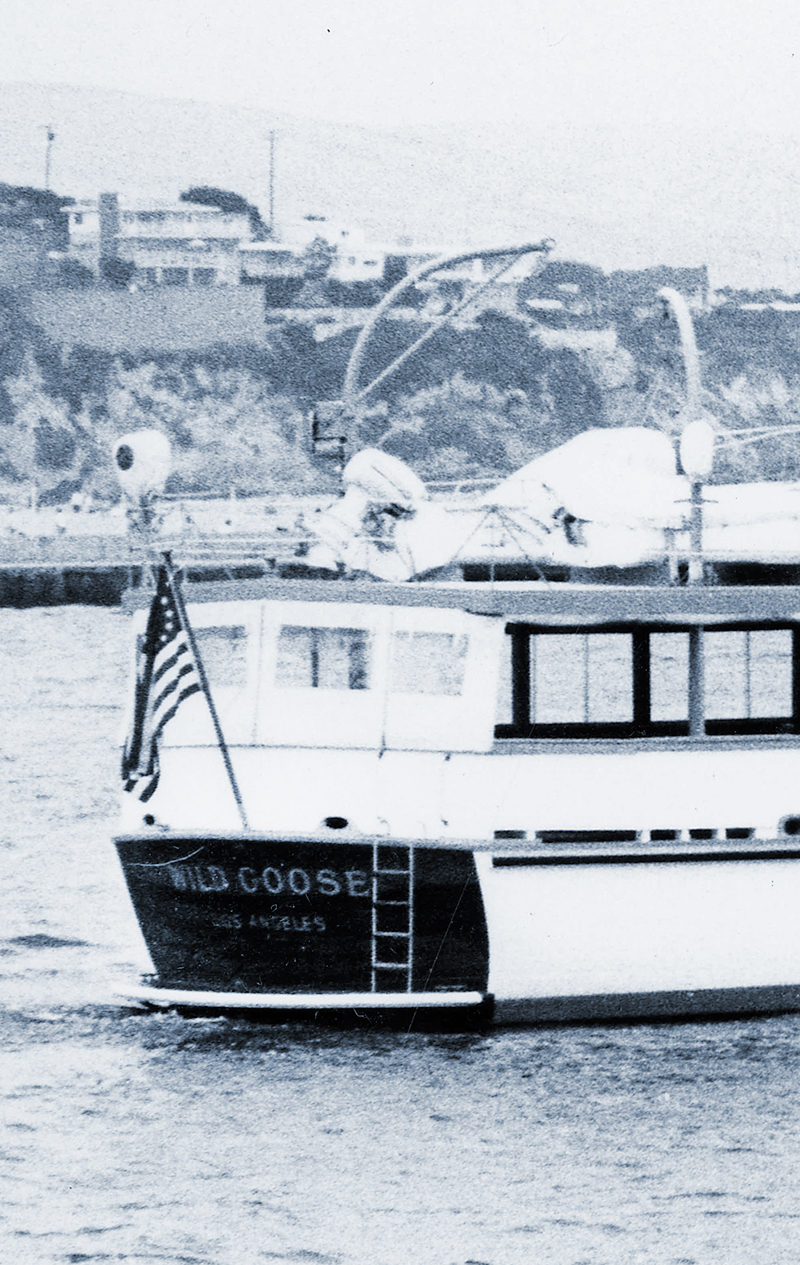
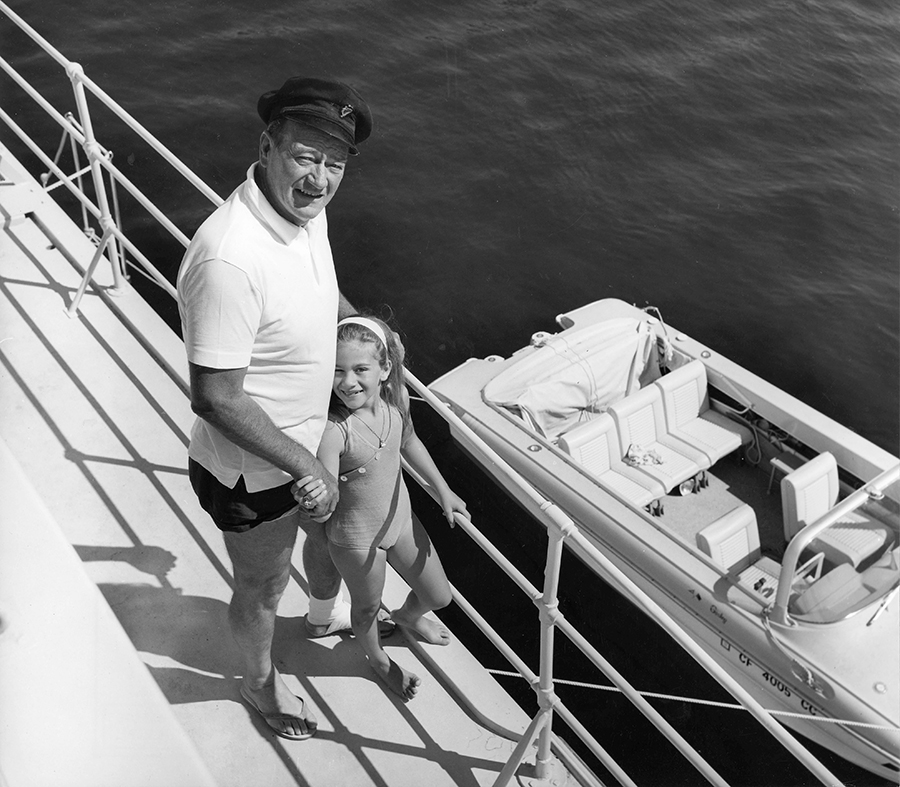
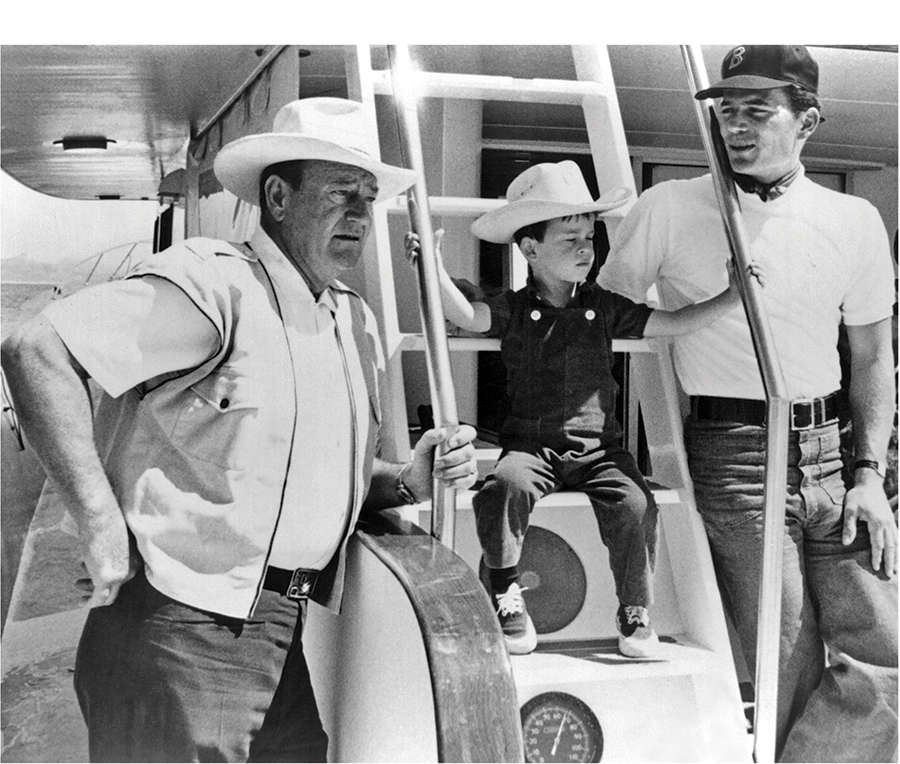 John, Ethan and Patrick Wayne in 1965. When not aboard the boat, Ethan spent part of his childhood on set with his dad.
John, Ethan and Patrick Wayne in 1965. When not aboard the boat, Ethan spent part of his childhood on set with his dad.
